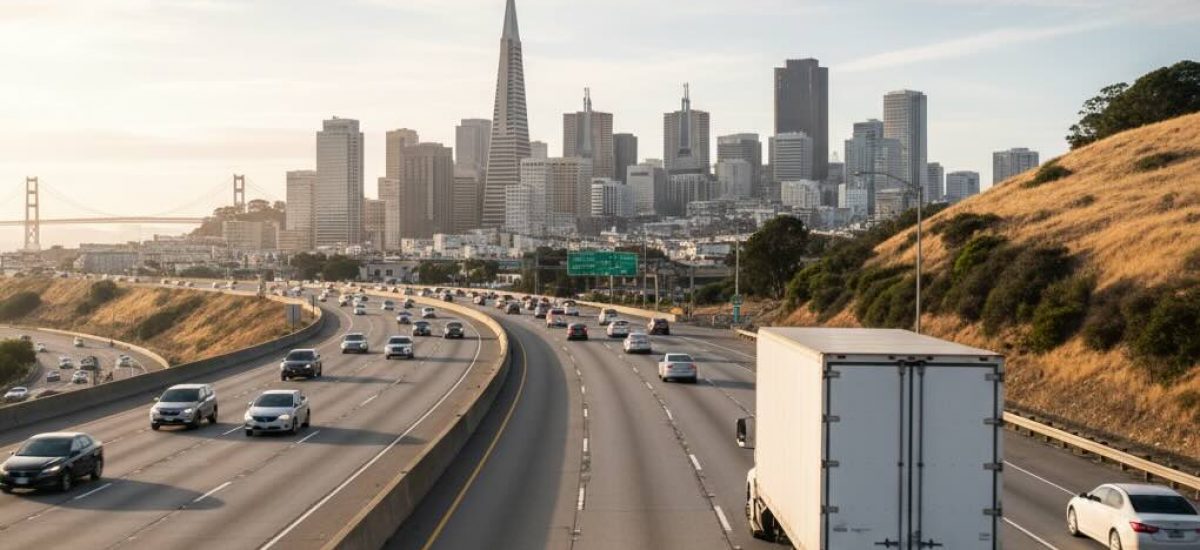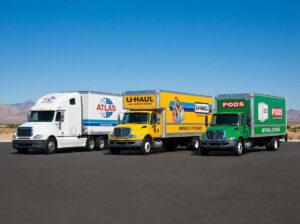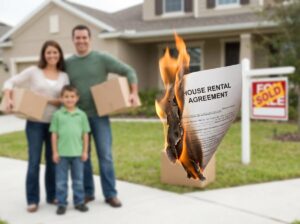Swapping San Francisco to New York’s energy isn’t about cheaper living, it’s about new momentum. Whether you’re chasing a role in finance or media, joining a new team, or simply ready for a busier rhythm, we’ll help you make the cross-country move feel organized, transparent, and doable.
How much does a San Francisco to New York move cost?
Pricing depends on inventory (weight/cubic feet), building access (elevators, stairs, long carries), season, and service level. Below are typical ranges for licensed interstate moves; actual quotes vary by shipment details.
| Move Type | Typical Range* | What’s Included |
|---|---|---|
| 1-Bedroom (Full-Service) | From $3,100 – $4,900 | Truck, pad-wrap, load/haul/deliver |
| 2–3 Bedroom (Full-Service) | From $6,000 – $10,000 | As above; range widens with stairs/elevator time |
| Container / Hybrid (DIY load) | From $2,500 – $4,000 | Line-haul & container; fuel/lodging extra |
*Summer peaks can add from 15 – 30%. Ask for written, itemized estimates (“binding” or “not-to-exceed”) and verify licensing via USDOT.
Want precise pricing?
We’ll build a book-today plan with crew count, timing, materials, protection plan, and clear pricing.
How long will my shipment take door-to-door?
For almost 2,900 road miles, dedicated or expedited trucks often deliver in 3 to 7 days; consolidated/shared loads typically run 7 to 21 days depending on routing and weather. Build a small arrival cushion, especially in winter.
When should you book?
- 8 – 12 weeks out: capture inventory (photos/video), gather 2–3 licensed quotes, reserve both buildings’ elevators. How far in advance to book movers.
- 4 – 6 weeks out: begin packing non-essentials; order specialty cartons; choose valuation coverage (below).
- 1 – 2 weeks out: confirm certificates of insurance (COIs) with both buildings; label rooms by color; set your NYC “first-night” kit.
What’s a smart packing plan for a cross-country move?
Decluttering 15 – 30% of volume can shave hundreds off line-haul.
Use double-walled cartons; keep boxes under ~50 lb; label by room → item type → fragile.
Electronics pack best in original boxes or with corner-protectors.
Plants may be restricted due to environmental rules and regulations, ask before packing.
- Box size cheat sheet (choose right cartons).
- How to pack glasses (fragile wrap & fills).
- Professional packing service (1 – 2 days for most homes).
Which valuation/insurance option should I choose?
Interstate movers must offer two liability levels:
- Released Value (no extra charge): typically $0.60/lb per article – minimal protection.
- Full Value Protection (FVP) (added cost): repair, replace, or cash-settle at current value (subject to deductible and declared shipment value).
Ask us to review deductibles, exclusions (e.g., owner-packed boxes), and how to list high-value items. Keep photos and a simple inventory for claims.
Do I need NYC permits, parking, or building paperwork?
Most New York buildings require a Certificate of Insurance (COI) for elevator/common-area coverage, coordinate this 1 – 2 weeks ahead. Curbside rules vary by block; we’ll advise on legal staging (commercial standing zones, loading windows) and whether a smaller shuttle helps avoid long carries.
Confirm elevator reservation windows and size limits; long carries and shuttle trucks can add cost and time.
Which documents and utilities should I update?
- USPS Change of Address: file online; identity-verification fee is about $1.10 – $1.25.
- Driver’s License: new NY residents must exchange an out-of-state license within 30 days.
- Vehicle & insurance: if you bring a car, review NY registration and insurance requirements before plating.
- Utilities & internet: schedule SF shutoff and NYC turn-on 1 – 2 weeks out; align with your delivery window.
What day-to-day changes should I expect in NYC?
Transit & fares: A 30-day Unlimited MetroCard is $132 as of now; weekly fare-capping with OMNY helps frequent riders. MetroCard sales end after December 31, 2025; OMNY becomes the default, with MetroCard acceptance phasing out thereafter.
Space & pace: Homes tend to run smaller, but most errands cluster along transit lines. Expect humid summers and true winters; many newcomers feel “settled” after 3 – 6 months as routines click.
Cost of Living & Rent at a Glance: NYC vs. San Francisco
Both cities are among the most expensive in the U.S., with housing doing most of the heavy lifting. Current asking and index data show NYC rents running higher than SF on average, with neighborhood-level variation.
| Metric (Sep 2025) | New York City | San Francisco | Notes |
|---|---|---|---|
| 1-Bedroom Asking (citywide) | from $4,5k (median) | Around $3,4k – $3,6k (median) | Zumper medians; method = active listings (subject to mix). |
| All-type Average Rent | Around $3,7k | Around $3,7k | Zillow Rental Market (all beds + types; smoothed). |
| Transit (monthly) | 30-day Unlimited $132 (MetroCard/OMNY) | Varies by agency; many rely on car/ridehail | MTA confirms MetroCard sales end 12/31/2025 as OMNY becomes default. |
| Walkability/Transit Access | Elite transit access; top national Transit Score | Very walkable; strong transit in core | Walk Score city pages and transit rankings. |
Methodology matters: listing medians (Zumper) can skew high in hot neighborhoods; Zillow’s all-type averages are broader. Use both to triangulate a budget.
San Francisco to New York: Which Neighborhoods Feel Like Home?
Matching vibe to vibe helps the city click faster. Here are SF-to-NYC analogs with typical 1-bedroom ranges to set expectations (actual asking rents vary by building quality, concessions, and proximity to transit).
Williamsburg (Brooklyn) Mission/SoMa
Creative energy, waterfront parks, L-train/M/J/Z access, lively dining.
1-BR: ~$4.6k–$4.8k.
Park Slope (Brooklyn) Noe Valley/Bernal
Brownstones, tree-lined streets, Prospect Park, good schools.
1-BR: ~$3.6k–$3.9k.
East Village (Manhattan) Inner Mission/North Beach
Nightlife, indie retail, tenement walk-ups; quick to Midtown via 4/5/6/L.
1-BR: ~$4.1k–$4.3k.
Upper West Side (Manhattan) Inner Richmond
Prewar charm, Central Park/Riverside Park access, family-friendly.
1-BR: ~$4.6k–$4.9k.
Astoria (Queens) Inner Sunset
Laid-back, great food, N/W to Midtown; value relative to Brooklyn core.
1-BR: ~$2.7k–$3.0k.
If you like SF’s micro-neighborhood feel, try previewing on a weekday evening to gauge street life and noise. Ask buildings about elevator size (for move-in) and service-elevator windows.
Want us to pre-plan your building logistics?
We’ll coordinate COIs, elevator reservations, and curb staging for your target neighborhoods.
From San Francisco to New York: What Lifestyle Changes Await?
New York’s rhythm is faster, but it comes with convenience and variety. Transit is a daily tool: with 5.5 million subway riders, the system reaches most neighborhoods, and the $132 monthly pass keeps costs predictable.
Housing runs smaller, think from 400 – 600 sq ft for many one-bedrooms, with utilities often 10 – 15% lower than in SF. Seasons shift from humid summers (around 85°F) to snowy winters (around 30°F), so plan a layered wardrobe.
Walkability (often 2 miles a day without trying) and a mix of 200+ languages make the city feel alive. Over the first year, many newcomers report higher career momentum, especially in finance and media, once they settle into a routine.
FAQ
How can I reduce my price without sacrificing quality?
Move mid-month or off-peak (late fall/winter), reduce volume before packing, avoid tight delivery windows, and request a binding not-to-exceed estimate. Always verify USDOT credentials and complaint history.
Is “released value” coverage enough?
Usually not for high-value items. At $0.60/lb, a 15-lb monitor is valued at $9. FVP raises protection closer to replacement value; compare deductibles and consider moving jewelry/art yourself.
Will the truck double-park on my block?
It depends on posted signs and local rules. We aim for legal loading zones or compliant commercial standing; sometimes a shuttle is best. Ask your building and our team what’s permitted at your exact address.
How soon will my goods arrive?
Dedicated/expedited: about 3 – 7 days. Shared loads: about 7 – 21 days depending on routing and weather. We’ll confirm your delivery spread in writing.
Do I really need to switch my license in 30 days?
Yes. New York requires new residents to exchange an out-of-state license within 30 days of becoming a resident.
References
- FMCSA – Protect Your Move (mover lookup & consumer guidance)
- FMCSA – Your Rights & Responsibilities When You Move (handbook)
- Surface Transportation Board – Household Goods Moving (consumer info)
- STB – Lost or Damaged Items (claims overview)
- MTA – Current Subway & Bus Fares (30-day $132; Unlimited options) & MTA Press: MetroCard sales end 12/31/2025 (OMNY)
- NY DMV – Exchange Out-of-State License (30-day rule)
- USPS – Official Change of Address (identity verification fee; online)
- NYC DOT – Commercial Vehicle Parking Rules
Ranges may vary by carrier, dates, and access. Always confirm current rules and fares before budgeting.
Coastal Moving Services is your trusted partner for a seamless transition from San Francisco to New York. We understand that a cross-country move is more than just logistics, it’s the start of a new chapter.
Call us today at +1-334-659-1878 for a free, no-obligation quote and start your journey from San Francisco to New York with confidence!








